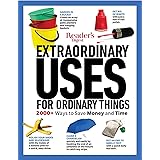The challenges of urban living are becoming increasingly evident, from gridlocked streets and a constant search for parking to the pressing need for more sustainable solutions. Many cities face these hurdles, impacting daily commutes and environmental health alike. Thankfully, innovative companies are stepping up to offer fresh perspectives and practical answers. The accompanying video introduces one such pioneering initiative: Whip, a new company bringing eco-friendly transportation to the forefront.
Whip is redefining urban travel by introducing an all-electric, private driving service designed to tackle modern urban issues head-on. By focusing on sustainable mobility, they offer a compelling solution for residents and visitors looking for convenient, guilt-free ways to navigate city centers.
Embracing the Future: What is Whip’s Eco-Friendly Transportation?
At its core, Whip is more than just a ride service; it’s a vision for a cleaner, more efficient urban future. Co-founder Matt Averyhart highlights that their vehicles are “100% electric,” ensuring “zero sound” and being “completely carbon net zero.” This commitment to environmental responsibility positions Whip as a leader in sustainable urban transit.
The company’s mission extends beyond just offering rides. They aim to significantly “decrease traffic downtown,” which in turn “open up more parking spaces.” This holistic approach addresses several critical urban pain points simultaneously, improving the quality of life for everyone in the city.
How Whip Operates: A Unique Model for Urban Mobility
Unlike traditional ride-sharing platforms, Whip operates on a distinct, privately contracted model. Matt Averyhart clarifies that while people might compare them to services like Uber, Whip differentiates itself by having rides “provided by someone else,” meaning “you don’t have to pay as the customer.” This innovative approach suggests a partnership or sponsorship model, making convenient, eco-friendly transportation accessible without direct cost to the end-user.
Whip actively partners with local entities to provide its services. This includes collaborations with the city itself to ensure transportation for everyone downtown. Furthermore, they work with groups such as the Chattanooga Tourism Bureau, specifically catering to events and enhancing the visitor experience. These strategic partnerships allow Whip to integrate seamlessly into the urban fabric and serve a broad spectrum of needs.
The Rise of Micro-Mobility and Electric Vehicles
The world is witnessing a significant shift towards more sustainable modes of transport, and micro-mobility solutions like Whip are at the forefront of this evolution. Micro-mobility refers to a range of small, lightweight vehicles operating at speeds typically below 25 mph, ideal for short-distance travel within urban environments. This category includes everything from electric scooters and bikes to the low-speed electric vehicles Whip utilizes.
Electric vehicles (EVs) are no longer a niche market; they represent the inevitable future of personal and public transportation. Their advantages are numerous: they produce zero tailpipe emissions, reducing urban air pollution and our collective carbon footprint. They are often quieter than traditional gasoline-powered cars, contributing to less noise pollution in bustling city centers. The move to 100% electric fleets by companies like Whip demonstrates a strong commitment to these environmental benefits.
Understanding the “Low-Speed Electric Vehicle” Advantage
Whip’s fleet consists of low-speed electric vehicles (LSEVs). These are not mere golf carts, as Matt Averyhart explains; they are “like a full-sized vehicle” but designed for urban environments where higher speeds are unnecessary and potentially dangerous. The specific six-seater Shuttle described in the video can comfortably carry several passengers and “tops out at about 25 miles per hour.”
This speed limit is crucial. It makes LSEVs suitable for navigating city streets, often sharing lanes with bicycles or operating on designated routes. The smaller footprint of these vehicles also contributes to reduced road congestion and easier maneuverability in tight urban spaces. Their design often prioritizes safety at lower speeds, making them an excellent choice for efficient, short-haul urban transport.
Impact on Urban Life: More Than Just Rides
The ripple effects of a service like Whip extend far beyond simply moving people from point A to point B. Its presence can profoundly reshape urban dynamics and enhance the quality of life for residents and tourists.
-
Reduced Traffic Congestion: By offering an attractive alternative to personal cars, especially for short trips, Whip helps take vehicles off the road. Fewer cars mean smoother traffic flow, less time wasted idling, and a generally more pleasant urban environment.
-
Increased Parking Availability: One of the biggest frustrations in any downtown area is finding parking. If more people opt for services like Whip, fewer private vehicles need parking spaces, freeing them up for those who truly need them or for alternative urban development.
-
Enhanced Tourist Experience: For visitors, navigating a new city can be daunting. A free, eco-friendly transportation service that connects key attractions and event venues, as Whip does with the Chattanooga Tourism Bureau, significantly improves accessibility and enjoyment.
-
Environmental Benefits: The “completely carbon net zero” operation of Whip’s fleet is a direct contribution to cleaner air and reduced greenhouse gas emissions. This aligns with global efforts to combat climate change and creates healthier urban ecosystems.
The Co-Mobility Summit: A Platform for Sustainable Innovation
The commitment to shaping the future of transportation is often highlighted at key industry events. Whip’s participation in the Co-Mobility Summit, hosted by Co.Lab from May 9th through the 11th, underscores its dedication to this larger vision. Such summits bring together innovators, policymakers, and enthusiasts to discuss the next generation of urban movement.
At this significant event, discussions revolve around “electric vehicles, the future of sustainable mobility.” Whip’s role is to represent “micro-mobility and micro-transportation,” offering a practical, operational example of these concepts in action. These gatherings are vital for sharing knowledge, fostering partnerships, and accelerating the adoption of sustainable transport solutions globally.
The Broader Vision: Paving the Way for Autonomous and Electric Futures
Matt Averyhart succinctly captures the essence of this movement: “We all know that the future of transportation is completely electric, maybe autonomous.” While fully autonomous vehicles are still evolving, steps like the introduction of Whip’s eco-friendly transportation service are crucial building blocks. They familiarize the public with electric power, shared mobility models, and the benefits of low-speed urban transit.
These initiatives are more than just about individual companies; they are about fostering an ecosystem where sustainable choices become the norm. By integrating with city infrastructure and partnering with local organizations, Whip demonstrates how private enterprise can contribute meaningfully to public good. This collaborative spirit is essential for transitioning towards smarter, greener cities.
The journey towards a fully electric and potentially autonomous transportation system is a gradual one. Companies like Whip are not just offering a service; they are laying the groundwork, one quiet, carbon-free ride at a time. To learn more about Whip and its pioneering approach to sustainable mobility, interested individuals can follow them on social media platforms and visit their website for additional information.











